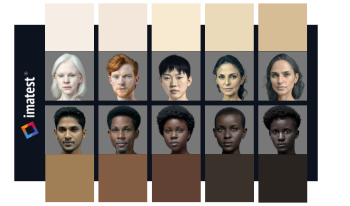
Consumer cameras are indispensable tools for communication, content creation, and remote work, but image and video quality can be affected by various factors such as lighting, hardware, scene content, face detection, and automatic image processing algorithms. This paper investigates how web and phone camera systems perform in face-present scenes containing diverse skin tones, and how performance can be objectively measured using standard procedures and analyses. We closely examine image quality factors (IQFs) commonly impacted by scene content, emphasizing automatic white balance (AWB), automatic exposure (AE), and color reproduction according to Valued Camera Experience (VCX) standard procedures. Video tests are conducted for scenes containing standard compliant mannequin heads, and across a novel set of AI-generated faces with 10 additional skin tones based on the Monk Skin Tone Scale. Findings indicate that color shifts, exposure errors, and reduced overall image fidelity are unfortunately common for scenes containing darker skin tones, revealing a major short-coming in modern-day automatic image processing algorithms, highlighting the need for testing across a more diverse range of skin tones when developing automatic processing pipelines and the standards that test them.

VCX or Valued Camera eXperience is a nonprofit organization dedicated to the objective and transparent evaluation of mobile phone cameras. The members continuously work on the development of a test scheme that can provide an objective score for the camera performance. Every device is tested for a variety of image quality factors while these typically based on existing standards. This paper presents that latest development with the newly released version 2023 and the process behind it. New metric included are extended tests on video dynamics, AE and AWB, dedicated tests on ultra wide modules and adjustments to the metric system based on a large scale subjective study.

VCX or Valued Camera eXperience is a nonprofit organization dedicated to the objective and transparent evaluation of mobile phone cameras. The members continuously work on the development of a test scheme that can provide an objective score for the camera performance. Every device is tested for a variety of image quality factors while these typically based on existing standards. Tests include texture loss, resolution, low light performance, shooting time lag, image stabilisation performance and more, all for a variety of different capture conditions. This paper presents that latest development with the newly released version 2020 and the process behind it.